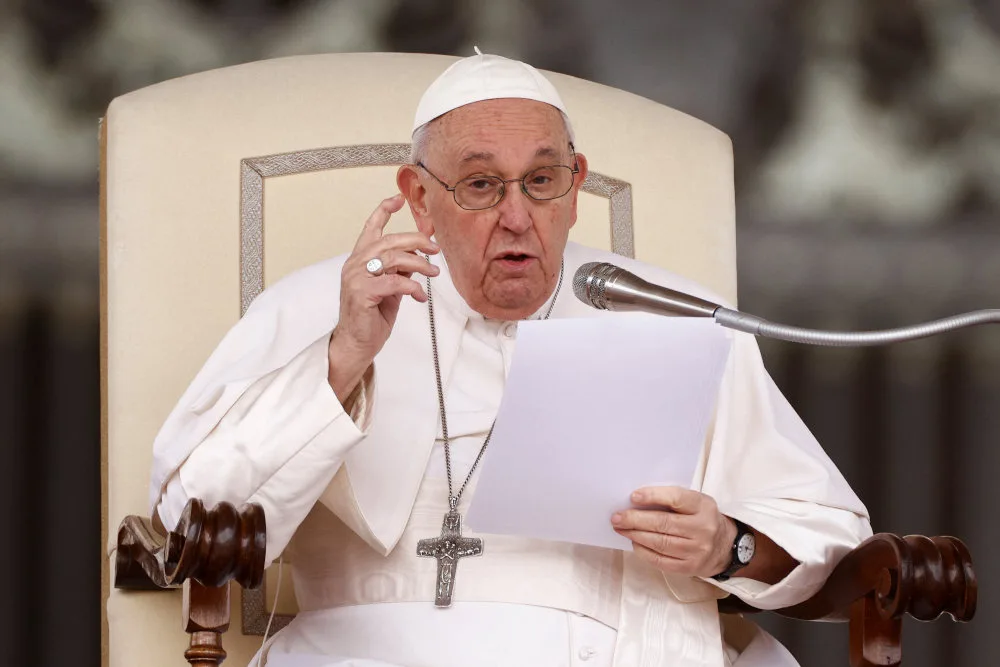On the Feast of St. Athanasius, May 2, 2024, a controversial document titled “Statement on Pope Francis” was published on Rorate Caeli—a platform known for its traditionalist Catholic perspective. This statement, calling for Pope Francis’s resignation, charges him with grave misdeeds that allegedly have compromised both the integrity of the Holy See and the global trust in the Papacy. In this blog post, we delve into the details of this accusatory document and explore its implications for the Catholic Church, juxtaposing these claims against the broader historical context of Papal criticism.
Background of the Accusations
Since ascending to the Papacy in 2013, Pope Francis has been a polarizing figure, lauded by many for his progressive stances on various issues, including climate change and economic inequality. However, his papacy has not been without its critics, particularly from the conservative and traditionalist sectors within the Church. The “Statement on Pope Francis” synthesizes these criticisms into a formal call for his resignation, presenting a litany of alleged actions that, if true, could be seen as undermining the canonical and moral structures of the Church.
The Most Damning Claim: Shielding Sexual Predators
The document’s most explosive claim is that Pope Francis protected, and even promoted, clerics accused of sexual abuse. This accusation is not just about moral failings but includes specific legal and canonical breaches. For instance, it references the case of Father Julio Grassi, a convicted abuser whom then-Archbishop Bergoglio allegedly tried to protect. Such actions, according to the statement, are habitual, pointing to a pattern of behavior that continued into his papacy.
The statement details appointments and promotions of individuals with known accusations of misconduct against them, which it claims demonstrates a disregard for the victims and a potential endangerment of the faithful. This systemic protection of offenders, if substantiated, not only challenges the moral authority of the Pope but also raises profound concerns about the mechanisms of accountability within the Vatican.
Broader Allegations and Historical Context
Beyond the specific instances of shielding abusers, the document accuses Pope Francis of various other misdeeds ranging from idolatrous acts involving the Pachamama to the suppression of the traditional Latin mass. These accusations are framed within a narrative suggesting that Pope Francis is part of a broader theological and moral departure from traditional Catholic values—a narrative that finds resonance among those who view Vatican II and its reforms skeptically.
The statement concludes with a reflection on these perceived shifts, insinuating that they are part of longstanding conspiracies to dilute or even dismantle orthodox Catholic doctrine. These concluding remarks aim to tap into the historical anxieties about the direction of the Church post-Vatican II, suggesting a continuity of crisis that St. Pius X attempted to quell with his early 20th-century campaigns against modernist theology.
Implications for the Church
The “Statement on Pope Francis” is a symptom of the deep ideological divisions within the Church. It serves as a rallying cry for those who feel alienated by the current ecclesiastical policies and yearn for a return to what they perceive as the authentic practices and beliefs of the Church. For the broader Catholic community, these allegations—regardless of their veracity—underscore the need for transparency, accountability, and perhaps most importantly, unity.
The Need for Due Process and Dialogue
Addressing these allegations requires more than just internal Vatican inquiries. It necessitates a transparent dialogue between different factions within the Church. The faithful deserve clear answers and reassurances that any form of misconduct, especially at the highest levels, is being addressed not with obfuscation but with openness and a firm commitment to justice.
Conclusion
As this document circulates and its contents are debated across various platforms, it is crucial to approach its claims with both critical scrutiny and an understanding of the Church’s complex history with reform and dissent. Whether these allegations will lead to any substantial change within the Vatican or merely deepen the existing fissures within the Church remains to be seen. What is clear, however, is that the “Statement on Pope Francis” is a significant moment in the ongoing story of the Catholic Church in the 21st century, reflecting both its internal struggles and its attempts to grapple with the demands of an increasingly complex world.


Leave a Reply